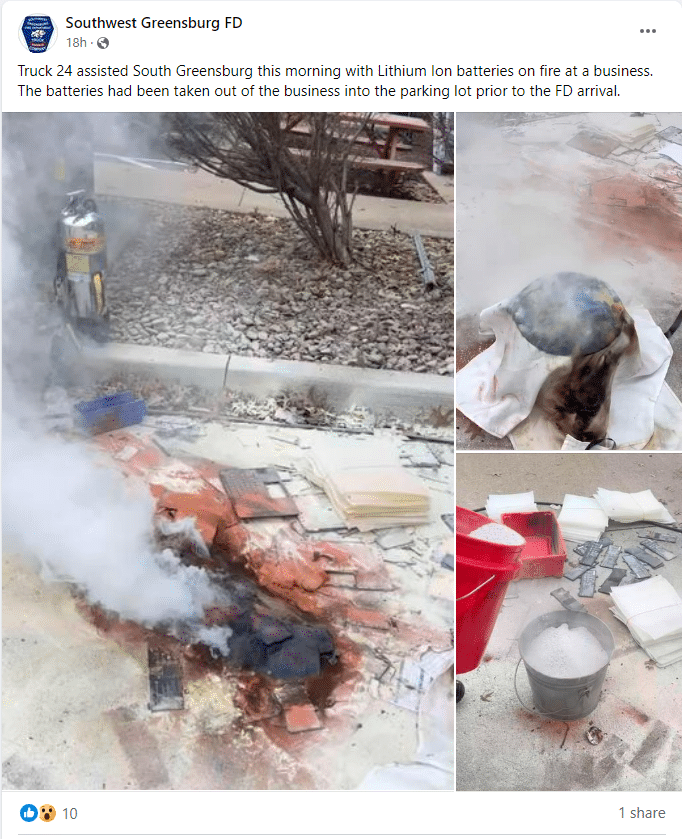Lithium-ion batteries power our lives, but when they are damaged, they pose serious fire risks. A recent incident in South Greensburg has brought this issue into sharp focus, underscoring the need for proper handling and disposal of these batteries.
Handling Damaged Lithium-Ion Batteries
When dealing with damaged lithium-ion batteries, safety should be your primary concern. It’s critical to wear appropriate personal protective equipment, including goggles and gloves, to protect against potential leaks of electrolyte. For temporary storage before disposal, place the battery in a container filled with sand or another inert material to stabilize it and prevent further damage. These batteries should not be thrown in regular trash or recycling bins due to their hazardous nature.
Disposal and Transportation of Lithium-Ion Batteries
Damaged lithium-ion batteries are considered universal waste and must be sent to a certified recycler. When shipping these batteries, follow Department of Transportation regulations, including proper packaging, labeling, and the use of UN-rated containers. Batteries should be surrounded by a material like vermiculite to prevent movement and possible short-circuiting during transport.
Understanding Lithium-Ion Battery Risks
Damaged lithium-ion batteries can lead to fires or explosions if the lithium reacts with moisture or oxygen. It’s essential to remove and isolate batteries that are overheating, have an unusual odor, are discolored, deformed, bulging, or show any signs of leakage.
Best Practices for Battery Safety
Store lithium-ion batteries in well-ventilated areas away from extreme temperatures and direct sunlight. Ensure batteries are kept with covered terminals to prevent shorts and are stored in places where they cannot be damaged or wet. It’s critical to educate your staff on the signs of battery damage and the necessary steps if a spill occurs, which includes isolating the area, wearing appropriate protective gear, and using non-cellulose absorbents for cleanup. For safe storage while awaiting proper disposal, damaged batteries should be placed in a container of sand or another chemically-inert cushioning material. Do not place damaged batteries in regular trash or recycling containers. For detailed U.S. guidelines on the safe handling, storage, and disposal of lithium-ion batteries, resources like those provided by EPA can offer comprehensive advice and procedures.
